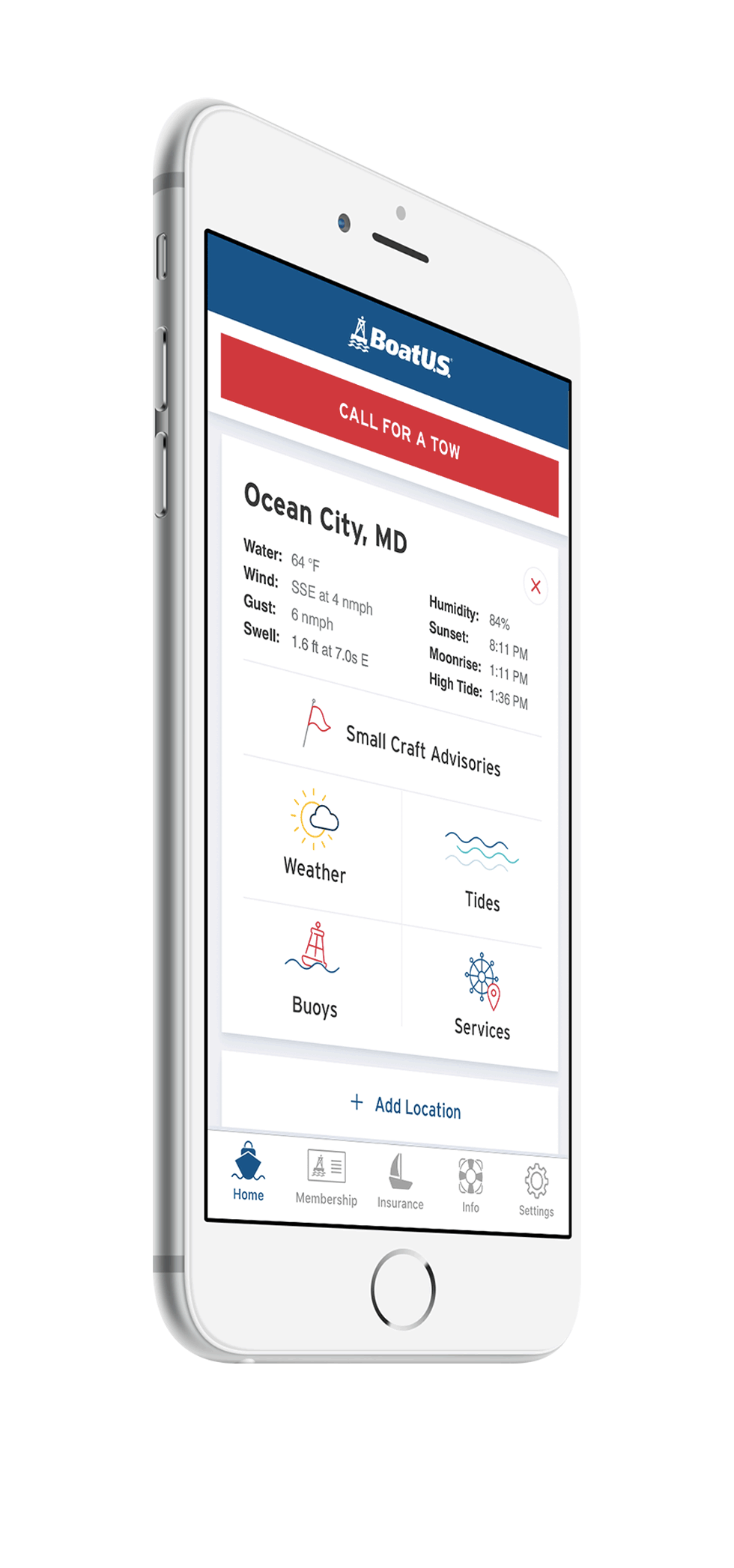3 main
boat coverages
Do you have enough coverage?
Check your policy to make sure you have the coverage that's right for you.
Insurance Terms to Know
Consequential Damage
Other immediate damage to the boat resulting from events like fire, explosion, sinking, collision, stranding or dismasting.
Cruising Area
The geographic area or waterway where the boat will be used. Boats taken outside the cruising area may require an extension.
Deductible
The portion of a claim you pay out of pocket. The higher the deductible, the lower the insurance premium.
Depreciation
A measured decrease in value of the boat or its parts and equipment due to age.
HIN
Hull identification number, unique to the boat as a VIN is to a car.
Liability
Who’s legally at fault. Liability insurance provides coverage for third party property damage or personal injury.
Marine Surveyor
Accredited marine specialist who can determine the condition or value of the boat, or if in the event of a loss, assess damage to the boat.
Salvage
Successful rescue of a boat from a perilous or dangerous situation.
Sound & Seaworthy Statement
Confirmation by the boat owner that the boat is in safe and proper condition.
Towing
On-the-water or on-the-road for breakdowns, dead batteries, fuel delivery and (roadside) flat tires on vehicle or trailer. Check your endorsements for coverage with your policy.
Main Causes Boats Sink
Wear/Tear
55%
Collisions
16%
Mechanical/Electrical
13%
Fire/Explosion
6%
Hurricane/Storm/Tornado/Wind
6%
Flooding
2%
Ice/Freeze
2%
As you can see most causes of sinking may be avoidable with regular maintenance and properly done repairs. It is essential to perform regular boat maintenance for all parts and systems. Do yourself a favor and take care of your boat so it takes care of you.
The second takeaway is to pay attention to where you’re going! Collisions make for a bad day on the water. Learn and follow the navigation rules, always maintain a proper lookout and operate at a safe speed.
Navigating the waters
Tip
No matter the situation, always have a proper lookout, operate at a safe speed and give way to another vessel when in doubt. Always avoid collision, even if that means breaking a navigation rule.
Essential Items
To Keep Onboard
Life Jackets
Life Ring
Bailer
Fire Extinguisher
Flash Light
Paddles
Marine Flares
Anchor
First Aid Kit
Air Horn
VHF Radio
Extra Fuel
Online Boating CoursesTIP: The BoatUS Foundation for Boating Safety & Clean Water offers a free online boating course that may qualify for your state’s boating license requirements. Visit BoatUS.org/free for details. |
|
Check local requirements. Equipment required onboard varies with boat type, length and your state regulations. Check to make sure your boat is legally equipped before you head out on the water. |
Don't Get Stranded
on-the-water towing assistance From

Need help on the water? Use the BoatUS App for the fastest way to get a tow or call 877-585-2628.
On-the-Water Towing:
Unlimited Towing available by endorsement for the insured boat. Visit BoatUS.com for details.
1. 24-hour dispatch
2. Breakdowns
3. Fuel delivery
4. Soft ungroundings
5. Battery Jumps
6. No effect on claim history
7. No deductible
8. Direct payment to service provider
On-the-Road Towing:
Unlimited TRAILER ASSIST® is included in your policy when you insure your trailer. Visit BoatUS.com for details.
1. 24-hour dispatch
2. Jump-starts
3. Lockout service
4. Fuel delivery
5. Flat tires
6. Towing to any facility
*Check policy endorsements for details and exclusions. Call (877) 581-2628 to add to your policy. Not an emergency service.
Step-By-Step
trailer launch checklist
Watch instructional videos on the BoatUS Youtube Channel

Move Equipment
Move coolers and watersports equipment
from the tow vehicle to the boat. Don’t move the boat
down the ramp until all crew has arrived and boat is
fully loaded.

Disconnect tie-downs & lights
Disconnect tie-downs across gunwales and
transom. Keep boat attached to trailer with
both winch and safety chain on
the bow eye. Disconnect trailer
lights from tow vehicle.

Install Drain Plug
Remove the transom saver if
you use one. This may also be the time to lower the outboard
or sterndrive if it won’t bottom out on the way down the ramp.
Tap for more

Roll Down Vehicle Windows
Get pets and passengers out of the vehicle. Remove your seatbelt. This way you can easily escape in case of accidentally sinking the tow vehicle.

Position trailer
Position the trailer at the top of the ramp and slowly back down. If the trailer jackknifes or becomes difficult to straighten, go back up the ramp a little way and start again.

Park Vehicle
Once you've reached the water level where the boat can be launched, put the vehicle in park, set the parking brake and chock the front wheels if you need extra support.

Remove straps / hooks / chains
Remove winch strap/cable hook from the bow eye and the safety chain. Push the boat into the water while your crew holds docklines attached to both bow and stern.

Move Boat
Move the boat to the end of the dock or, if possible, to the opposite side of the dock, away from the boat ramp.

Move Vehicle
Once the boat is safely off the trailer, pick up the wheel chocks, release the parking brake and drive the tow vehicle up the ramp. Park in a designated area for boat trailers.

Roll Down Vehicle Windows
Get pets and passengers out of the vehicle. Remove your seatbelt. This way you can easily escape in case of accidentally sinking the tow vehicle.

Position trailer
Position the trailer at the top of the ramp and slowly back down. If the trailer jackknifes or becomes difficult to straighten, go back up the ramp a little way and start again.

Park Vehicle
Once you've reached the water level where the
boat can be launched, put the vehicle in park, set the parking brake and chock the front wheels if you need extra support.

Remove straps / hooks / chains
Remove winch strap/cable hook from the bow eye and the safety chain. Push the boat into the water while your crew holds docklines attached to both bow and stern.

Move Boat
Move the boat to the end of the dock or, if possible, to the opposite side of the dock, away from the boat ramp.

Move Vehicle
Once the boat is safely off the trailer, pick up the wheel chocks, release the parking brake and drive the tow vehicle up the ramp. Park in a designated area for boat trailers.
Tip

When backing the boat trailer
Put your hand on the bottom of the steering wheel. When your hand moves left or right, the trailer will go in the
same direction.
 Weather Prep
Weather Prep 
for your Boat
Hurricane Prep
A plan is essential | Whether your boat is stored in your driveway or at a marina, there are steps you can take to save it from damage in the path of a hurricane. Plan ahead, practice and execute your plan in the days before landfall.
Coverage haul-out | Many boat insurance companies require their policyholders take steps to prepare their boat. Your policy is one of them and may cover some of the costs to prepare. For more information, visit BoatUS.com/hurricanes.
Winterizing
Prepare your boat for a long Winter's nap | What to do with your boat once boating season is over varies by boat and engine type. No one wants a springtime surprise when you’re ready to get back in the water, so take a moment to review the steps you need to take to best prepare your boat for cold weather.
Don't Get Left Out in the Cold | Your boat insurance policy has ice and freezing coverage options. For more information, consult your owner’s manual and visit BoatUS.com/winterizing.
Spring Outfitting
Hover overTap on a square!

Batteries & Terminals
Clean and tighten electrical connections. Coat battery terminals
with protective grease, film or spray. Check or replace batteries.

Lights
Check running lights. Clean/tighten connections or
replace bulbs. Inspect port lights and hatches for signs of leakage.

Connections
Check VHF and GPS antenna connections. Disconnect and
lubricate, then reconnect and test.

Bilge Pump
Test bilge pump and high-water switches and
alarms.

Alarms
Test smoke and carbon monoxide alarms, LPG
and gasoline fume detector.

Safety Gear
Check and service safety gear, including
lifejackets, flares, and fire extinguishers. Replace/recharge as necessary.
Smart Ways to Save Big
Make sure you’re taking advantage of all the premium discounts you’re eligible for.
Save up to 10% with a GEICO auto policy.
Take FREE online boating safety courses at BoatUS.org.
Get a Multi-Policy discount for insuring more than one boat with us.
Automatic savings could come your way with claim-free renewals and more!
If you don’t have any claims, a loss-free credit will be automatically applied beginning with your first policy renewal.
We also have a diminishing deductible available that can be added to your policy. Each loss-free year, your deductible will lessen by 25% – until it reaches $0!
Payments Made Easy
Pick the plan that works for you at GEICOMarine.com/account or through the BoatUS App.
Resources
Make it Easy:
Download
the app
Proof of insurance
Your insurance ID cards
can be accessed on your phone.
Manage your accounts
See and pay bills, enroll in
Auto Pay, file a claim, get a
quote and view insurance policy.
Locate marinas
Find out where you can get
discounts on fuel, repairs,
overnight slips and more.
Weather and tides
... and more! Check the conditions before you go or while underway.
One-Touch Towing
The fastest way to get assistance on the water or on the road. No boater should be on the water without the BoatUS App!



Content provided by BoatUS and the BoatUS Foundation. Boat Kit content is offered for informational purposes only. Requirements or best practices for your specific vessel, trailer, or policy may differ; please see your policy or owner’s manual for details. Policies and endorsements subject to limits and exclusions. Some discounts, coverages, payment plans and features are not available in all states or in all situations. Boat and PWC coverages are underwritten by GEICO Marine Insurance Company. GEICO Auto policyholders could be eligible for a premium discount on their GEICO Marine Insurance policy. TowBoatUS is the preferred towing service provider for GEICO Marine Insurance. GEICO is a registered service mark of Government Employees Insurance Company, Washington, D.C. 20076; a Berkshire Hathaway Inc. subsidiary. GEICO Gecko image © 1999–2018. © 2018 GEICO. Apple and Apple logo are registered trademarks of Apple Inc. ©2018 Google LLC All rights reserved. Google and the Google logo are registered trademarks of Google LLC.














